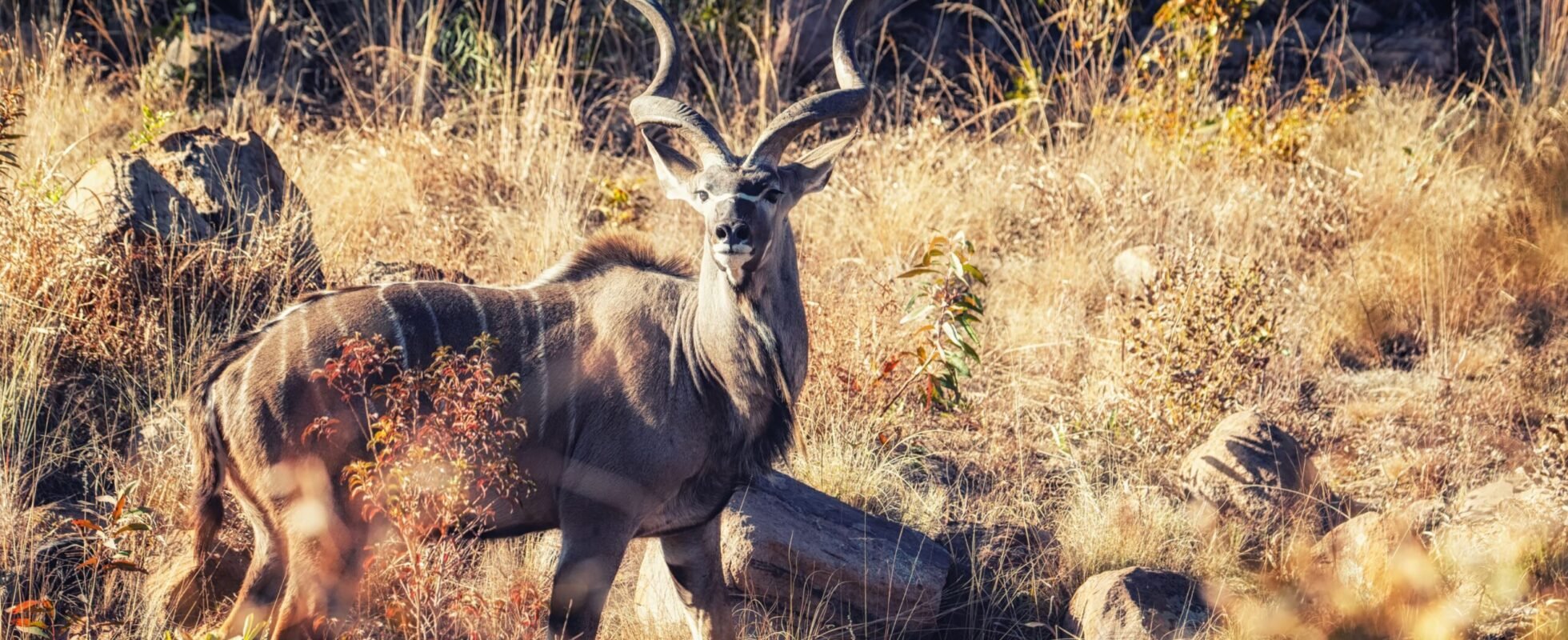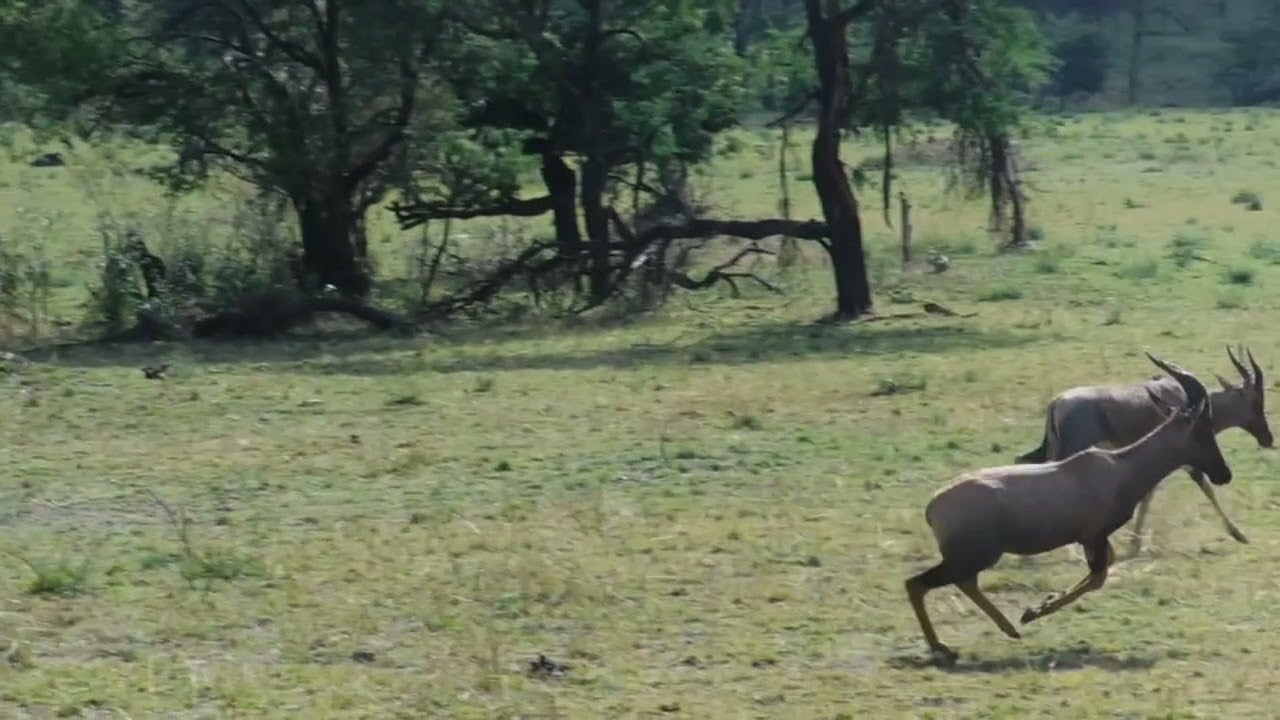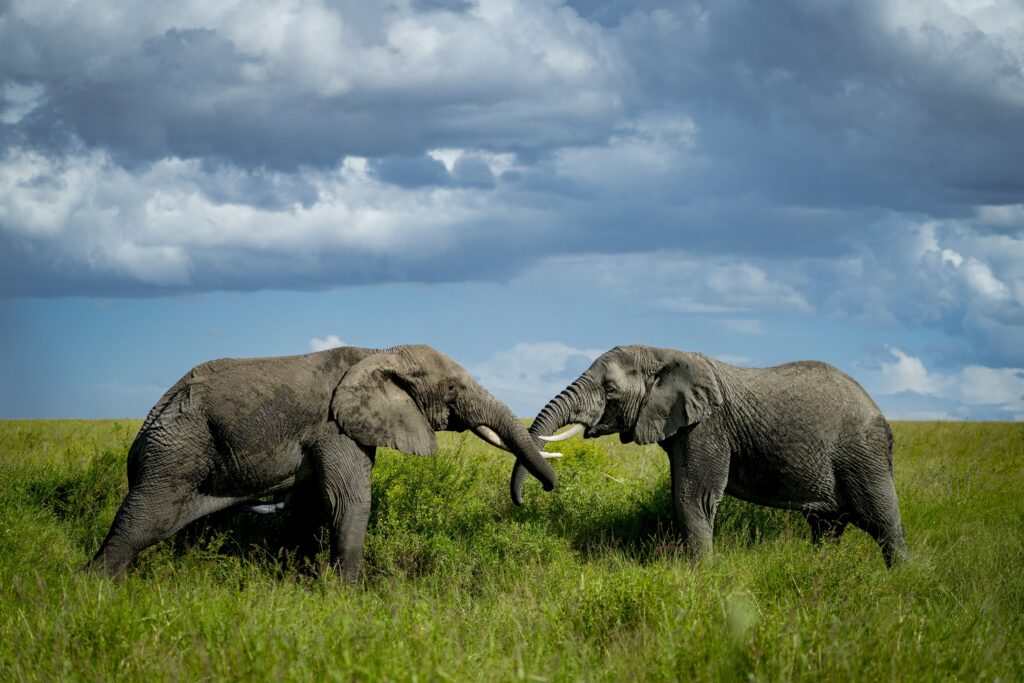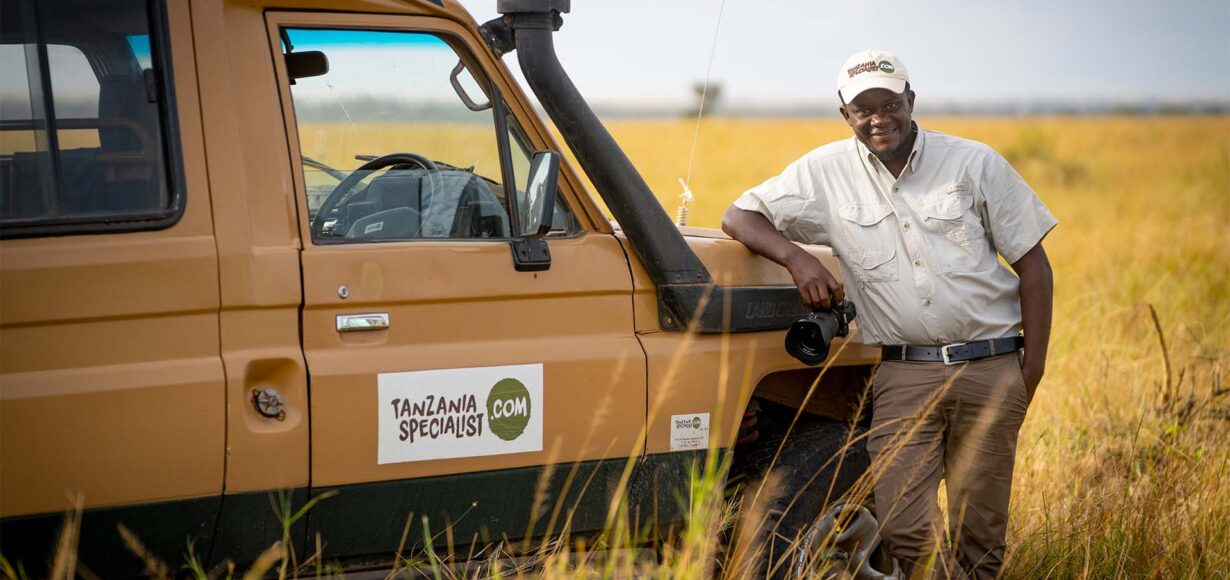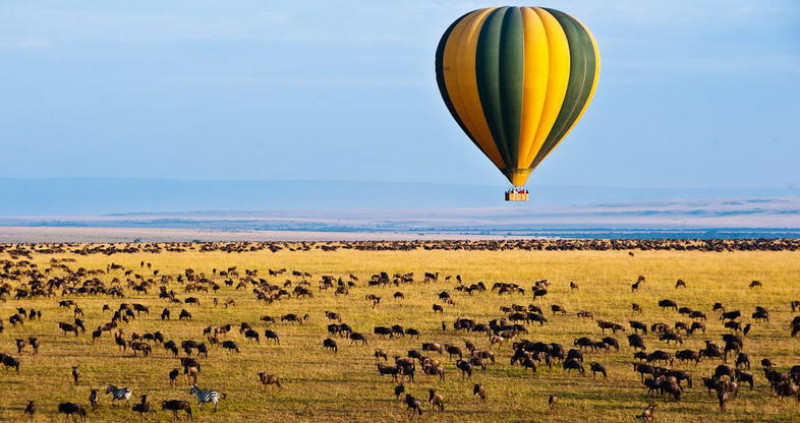
3 February 2023
Many of the Serengeti antelopes will be familiar to visitors from books, television or movies.
But there are a great number of antelope that perhaps are not so famous or familiar although just as important to the ecology of the landscape.
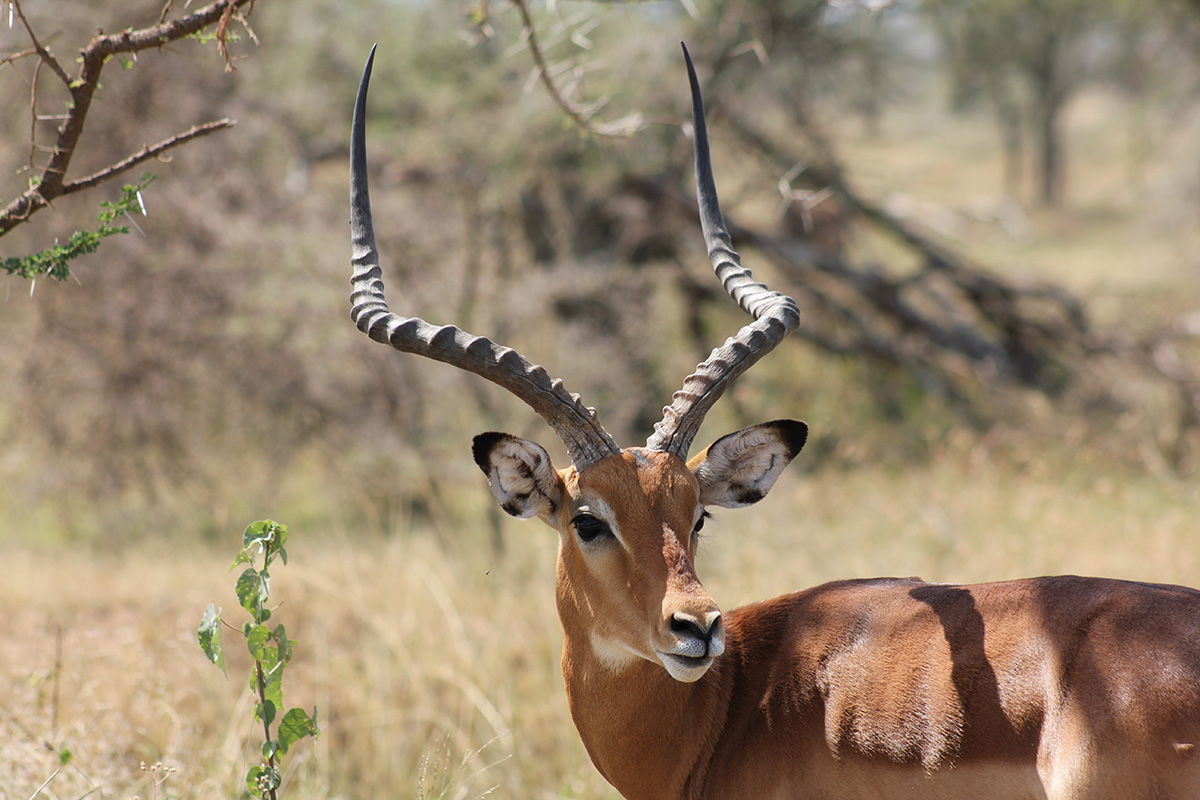
We take a look at the antelopes of the Serengeti as part of a safari guide to Tanzania and list all the wonderful animals you shouldn’t miss while visiting this beautiful part of Africa.
Types Of Antelopes In Serengeti
The Serengeti National Park is more than 14,750 square kilometers and home to 300 mammal species. In fact the park is most famous for its large herds of plains animals.
Among these are the different types of antelope which live in different parts of the Serengeti.
From the large wildebeest and eland to the tiny dik-dik and klipspringer this area of Africa has a wide range of wonderful antelope, sixteen types in total.
Some are incredibly pretty and others are just downright tough. Yet this incredible diversity of antelope all live in the same area, albeit quite a large area.
So, let’s take a look at these incredible Serengeti antelopes.
Wildebeest
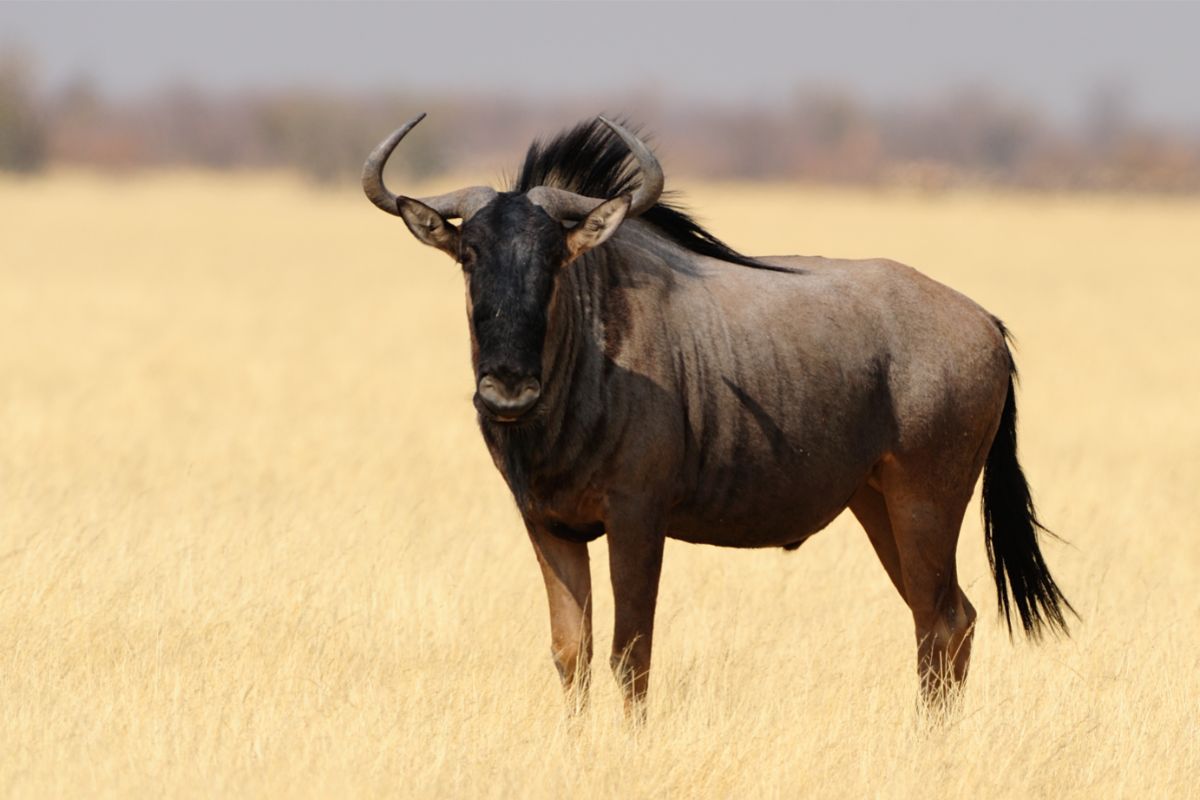
Wildebeest are perhaps the most well known of the antelope on the Serengeti. It is one of the largest antelope and is also known as the gnu, blue wildebeest or brindled gnu.
The are most famous for their massive numbers that take part in the Great Migration. This is when millions of large animals move in a large circular path following food and water sources.
The wildebeest while making up a large part of this migration but are not the only participants.
These large antelope are herbivores meaning they graze on vegetation such as grass and leaves.
They have a long rectangular head and a mane that extends down the ridge on their back.
Both the male and female wildebeest have long curved horns though the males tend to be bigger with a slightly darker coat.
Subspecies vary in color from slate gray to dark brown.
Eland
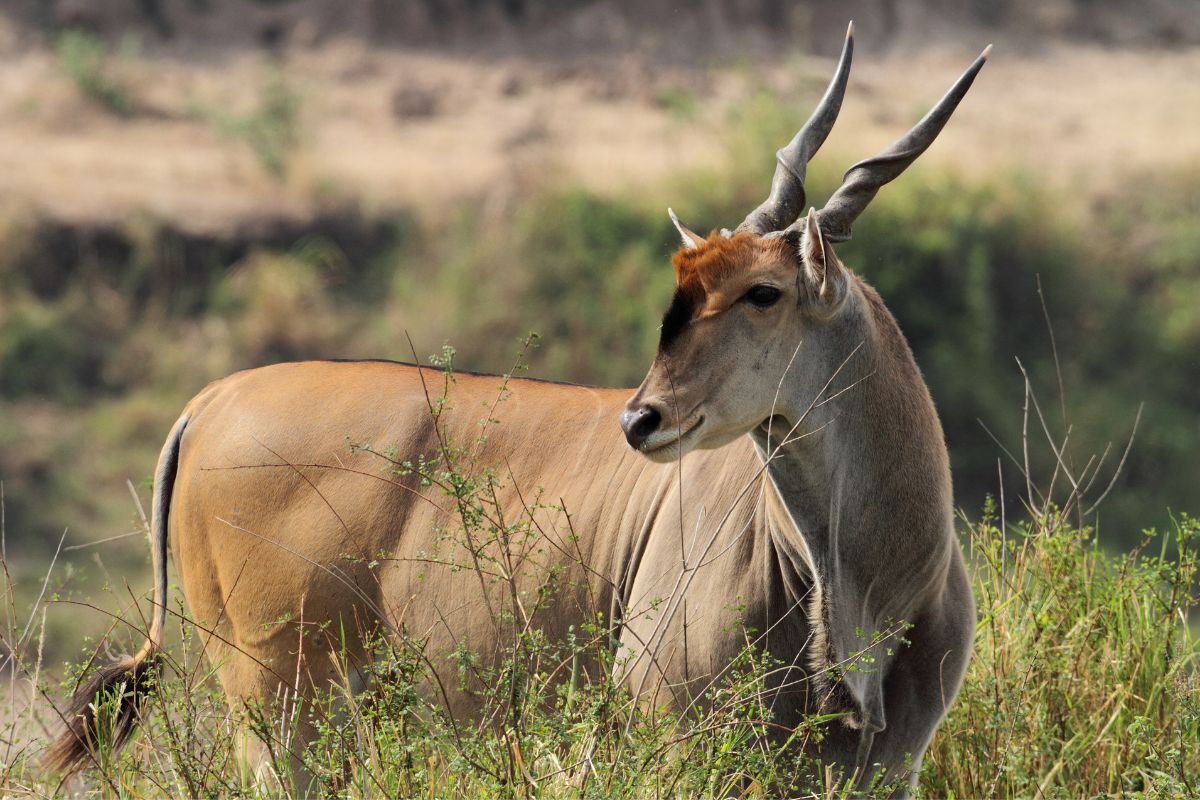
The eland are very large antelope and can weigh up to 2,000 pounds with a shoulder height of around 4.9 feet. Males tend to be bigger than females.
One of the most distinguishing features of the eland is their spiral horns.
They also have a prominent black stripe which runs down the center of their back and dewlaps under their neck. These help with thermoregulation in arid climates.
Elands are known as ‘track on track’ walkers.
This means wherever a front foot lands the rear foot will land in the same spot to minimize the amount of noise they make walking in the bush.
They can jump over three meters in height and can survive in desert, mountain or bush habitats. Eland are found in the northern woodlands of the Serengeti during the dry season.
In the wet season they are more often found in the southern or eastern plains of the park.
Lesser Kudu
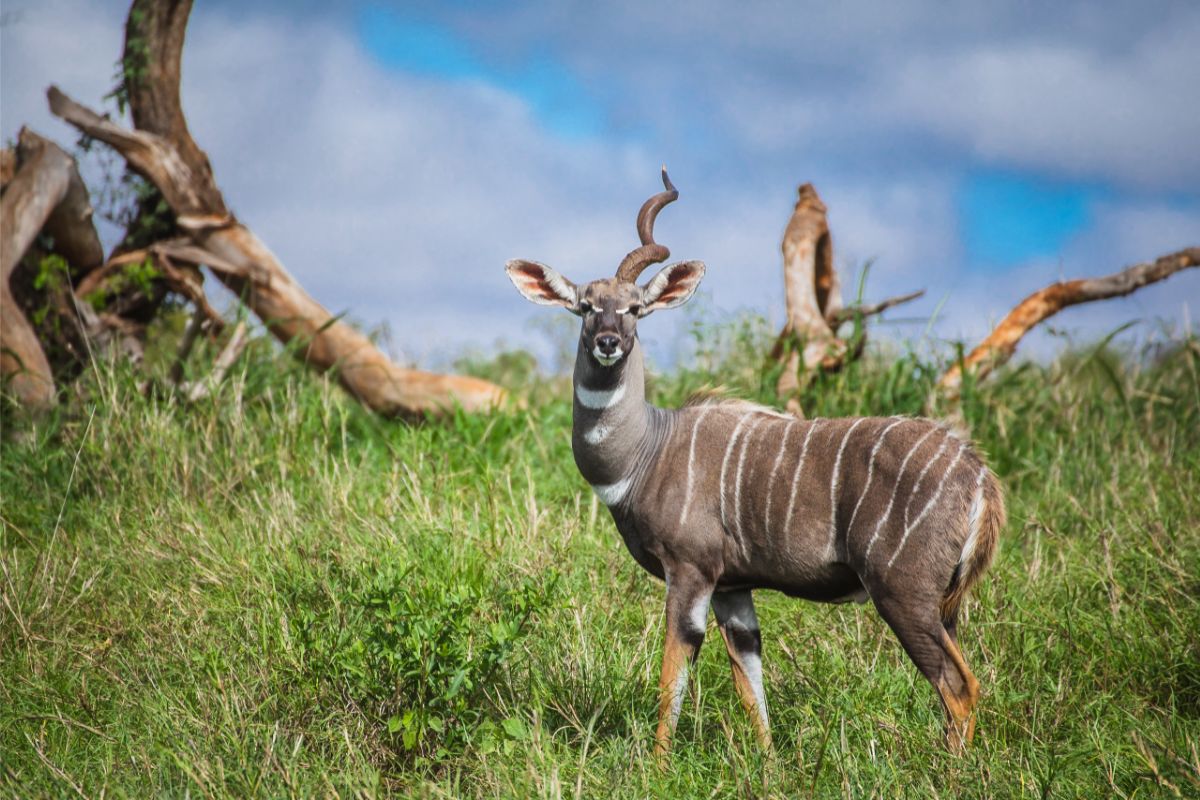
This Serengeti antelope is a striking creature and quite easy to identify. Although you may have a hard time spotting them as they are very shy and spend most of their time in thick vegetation.
Males have spiral horns and are typically larger than the females.
They have thin white stripes across their bodies and down the back with two thicker white stripes on the throat and neck. Males have a dark brown coat while females are more reddish brown.
Lesser kudu spend most of their time in the forests of the southwestern Serengeti.
Being quite difficult to see you are more likely to spot a flash of white from under their tail as they move away from you.
To distinguish between them from the greater kudu the legs and horns of the lesser kudu have an orange tinge to them.
Bohor Reedbuck
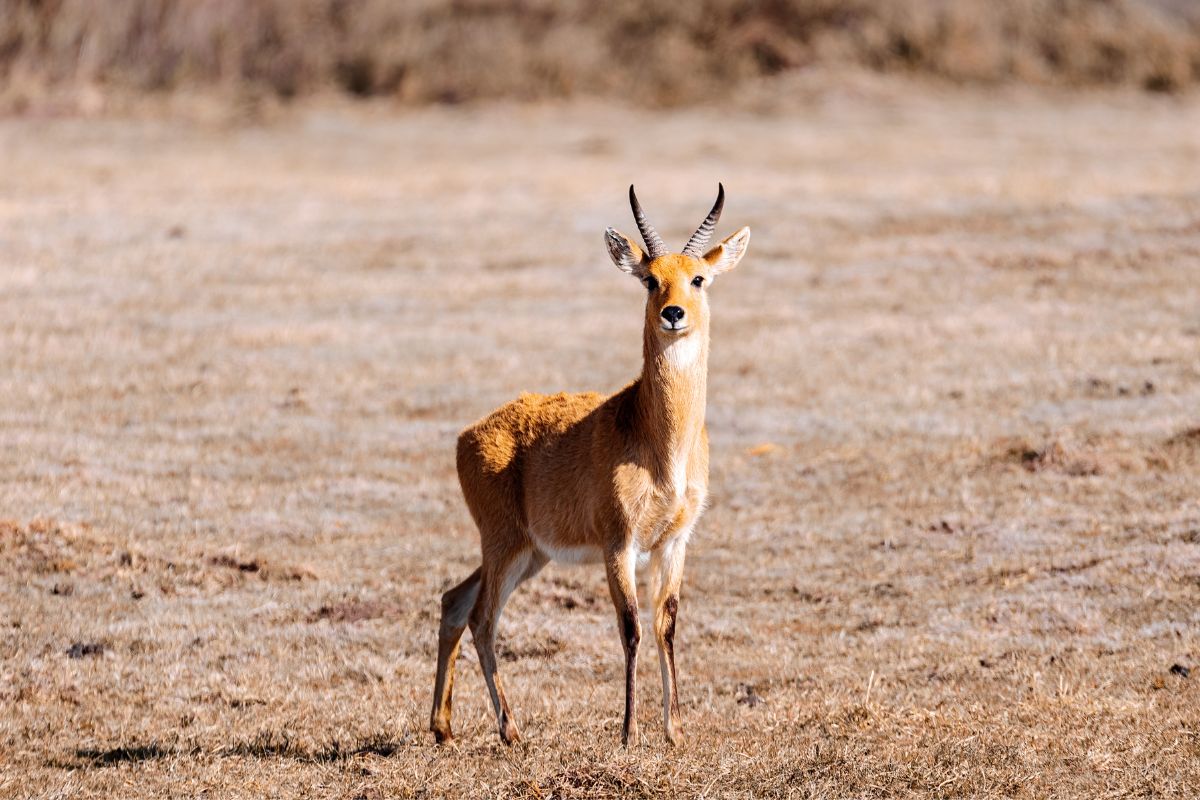
Bohor reedbuck are commonly spotted close to water sources in the Serengeti, mainly hiding in the tall grass. They are a medium sized antelope with long limbs.
Rams have stouter necks and build than females. They also have small, forward-facing horns while the females have none.
The coat is a yellow to grayish brown color with white undersides, and they have a dark stripe on the front of each foreleg.
Males can reach between 100-133 lbs while females are smaller at 77-100 lbs.
Bohor reedbuck live in small groups or pairs, and they are predominantly nocturnal, preferring to graze at night.
Females give birth to a single calf after a gestation period of over 7 months.
The young hide for the first two to three months of their life only coming out to nurse for 10-30 minutes at a time.
East African Oryx
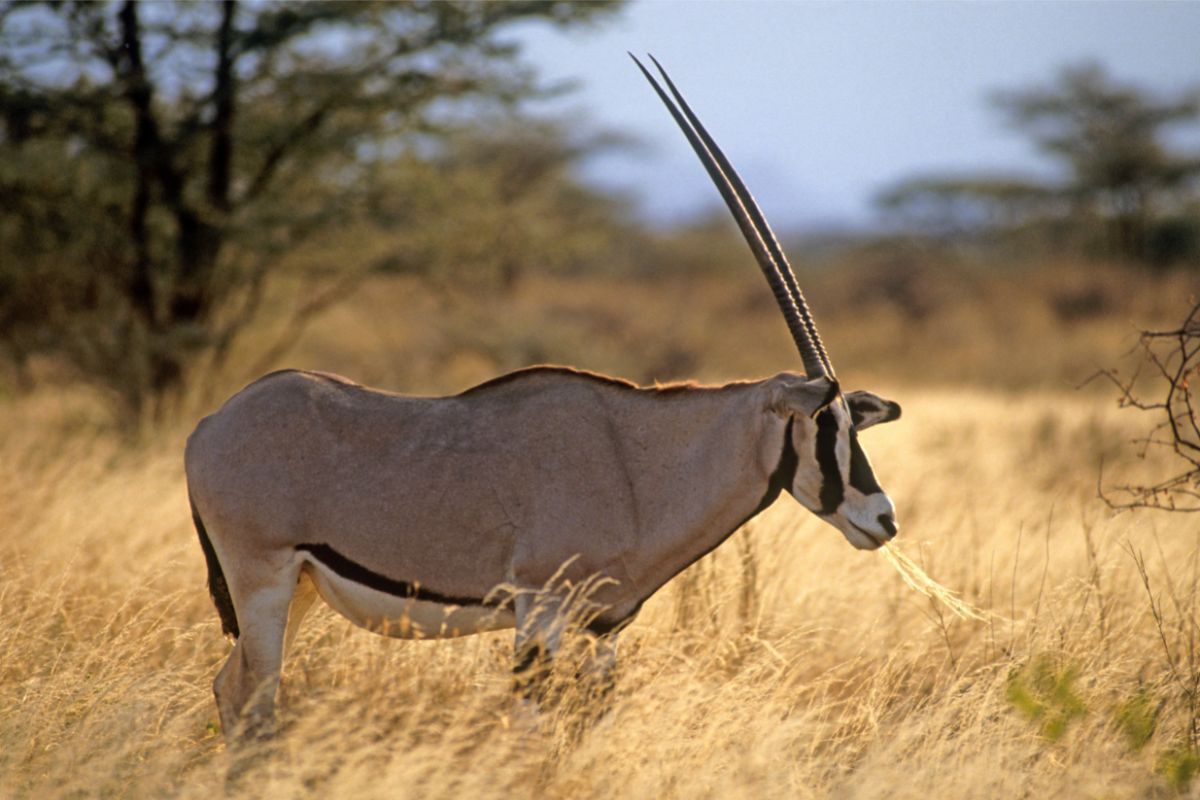
East African oryx also known as beisa are a threatened species of the Serengeti, with populations declining.
These animals have been illegally hunted by those who believe their blood and flesh can cure illnesses or give extraordinary strength.
The subspecies fringe-eared oryx is the type found in the Serengeti.
It is a very distinctive type of Serengeti antelope, fawn in color with black bands and white stripes on its face. There is a black line on the body where the fawn color gives way to a white underbelly.
Males and females tend to look the same, both having long, straight horns which have a ringed appearance.
They are a territorial animal and will use their speed as a defense mechanism against predators.
Grant’s Gazelle
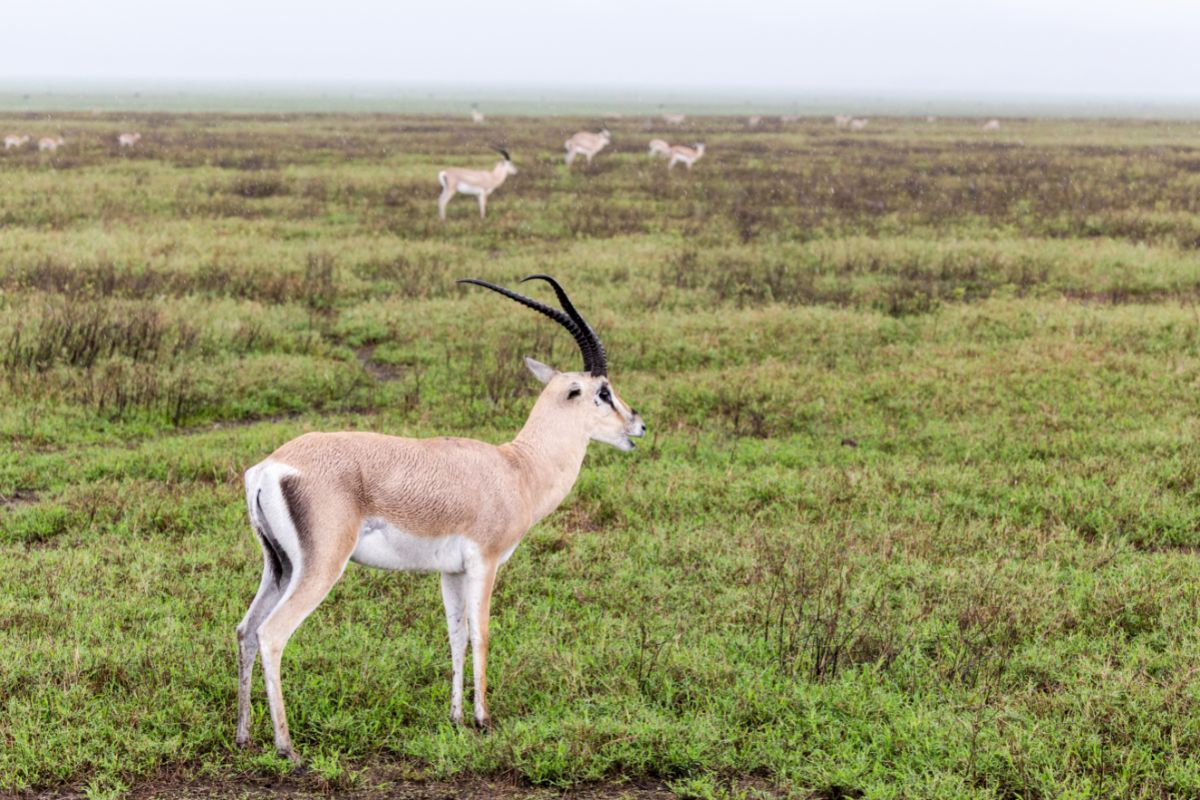
This is a beautiful antelope, quite often confused with the more widely known Thomson’s gazelle.
The Grant’s gazelle is however, larger and doesn’t have the black stripe on its side. They also have a white patch on the tail that extends up their back.
These Serengeti antelope live in large herds and take part in the Great Migration each year. They can go long periods without water.
This is possible as they have the ability to raise their body temperature so that they sweat less when they are hot, thereby conserving water.
Male Grant’s gazelles weigh between 121-176 lbs and females between 77-100 lbs.
Both the male and female have lyre-shaped horns which have a ringed appearance. They can measure between 18-30 inches in length.
Females give birth to one calf after a 7-month gestation. The calf is kept hidden in long grass, and the mother leaves to graze, returning several times a day to nurse the baby gazelle.
Thomson’s Gazelle
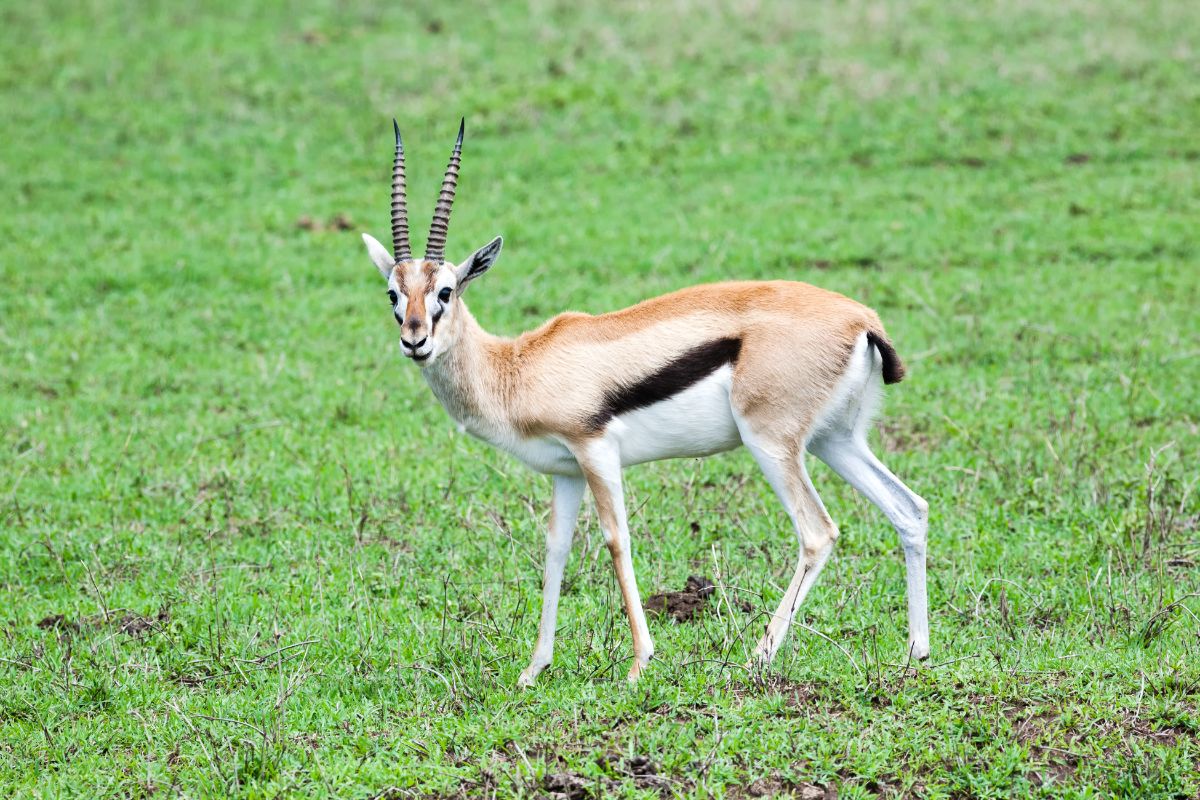
One of the better known antelopes of the Serengeti is the Thomson’s gazelle.
Smaller than its counterpart, the Grant’s gazelle, it has a distinctive lateral stripe on its abdomen to further tell them apart.
There are two subspecies of Thomson’s gazelles, the eastern and Serengeti Thomson’s gazelle.
The variety found in the Serengeti has a whiter face than the eastern gazelle and a black stripe which goes from the inner eye to the mouth.
It is estimated that there are around 500,000 gazelles in the Serengeti, a mixture of Thomson’s and Grant’s gazelles.
This makes them the second most numerous antelope in the park after the wildebeest.
Female Thomson’s gazelles have shorter horns than the males.
They give birth to a single calf following a 6-month gestation. Young Thomson’s gazelles often fall prey to predators in calving season.
Waterbuck
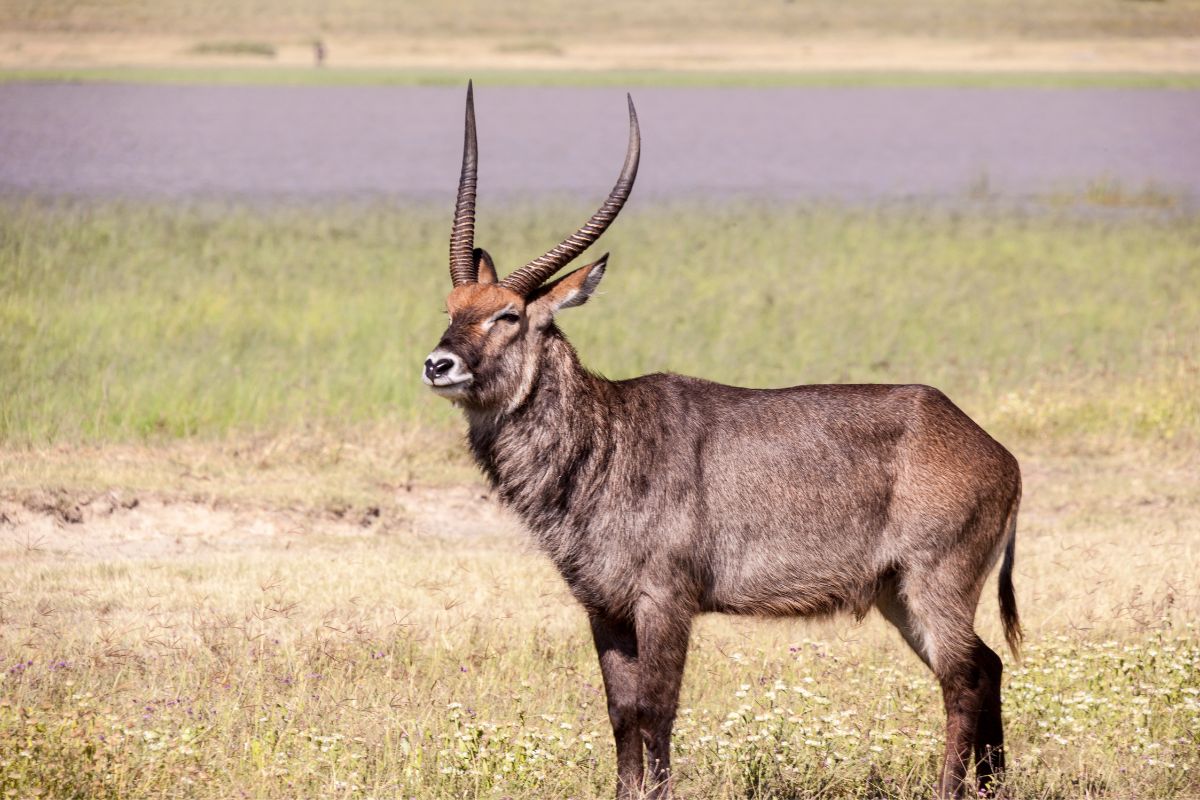
The waterbuck as its name suggests tends to stay close to a water source and needs a good supply of grass to feed.
For this reason it has very specific regions of the Serengeti where it lives such as the woodlands in the central part of the park.
These antelopes of the Serengeti are quite easy to identify as they have long, shaggy hair on their neck and a white ring on their rump.
Their coat has a water repellent layer thanks to a coating of oil and the males’ long, sweeping horns are faintly ringed. Horn length can be up to 40 inches.
Waterbuck are not a common prey for large predators which may be due to their thick coat. Perhaps for this reason they are typically only attacked by very hungry lions.
Male waterbuck are usually about 25% larger than females.
Breeding season can be spread throughout the year and there is a high mortality rate of young due to predators such as big cats.
Hartebeest
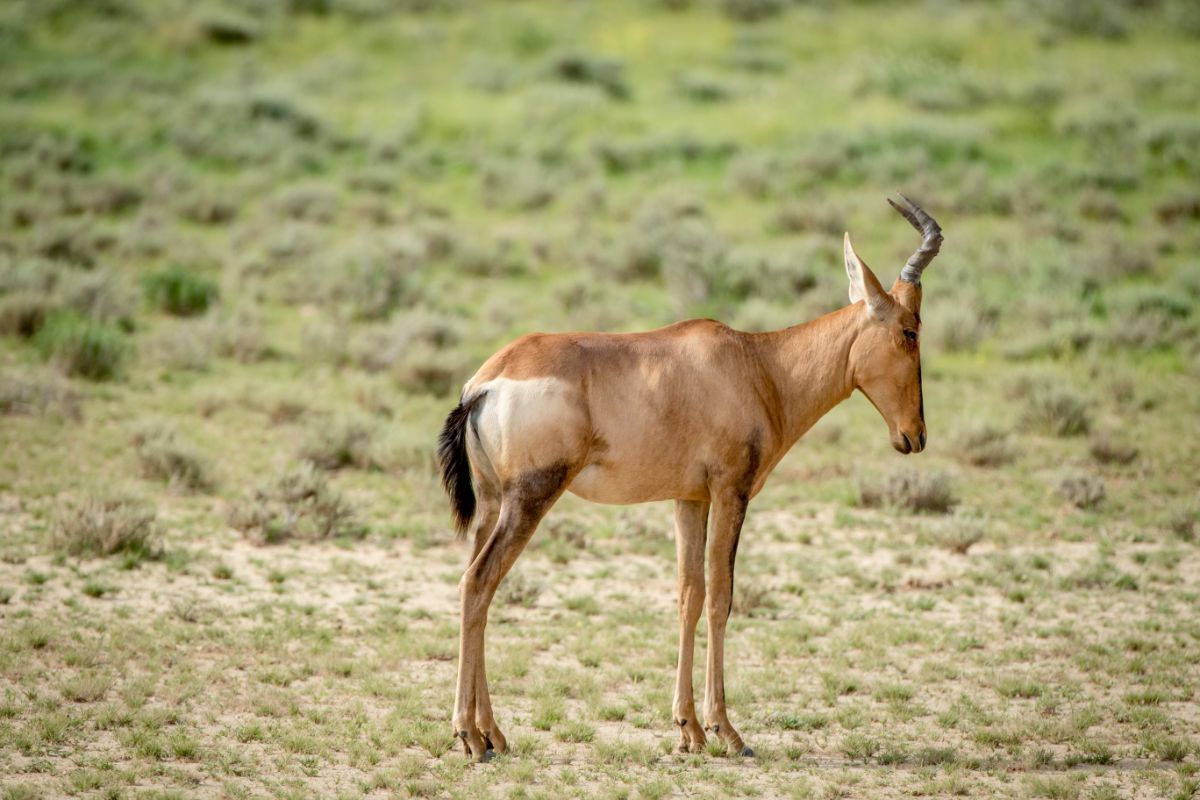
Hartebeests are also known as kongoni or kaama.
Despite their large size and ungainly appearance the hartebeest is one of the fastest antelope, capable of reaching 43 miles an hour. They are also surprisingly elegant for such a large mammal.
These Serengeti antelope are quite easily recognizable with their long faces, and steeply sloping backs.
They also have wide sweeping horns as opposed to the more common parallel horns of other antelope.
Their name actually translates to ‘tough ox’ and they are certainly resilient.
Hartebeests are not picky eaters and will eat what is available. Females will however, only give birth when there is availability of food.
Hartebeest stand at around 3-5 feet at the shoulder and weigh between 165-440 pounds. They live in organized herds which can exceed 300 animals.
Klipspringer
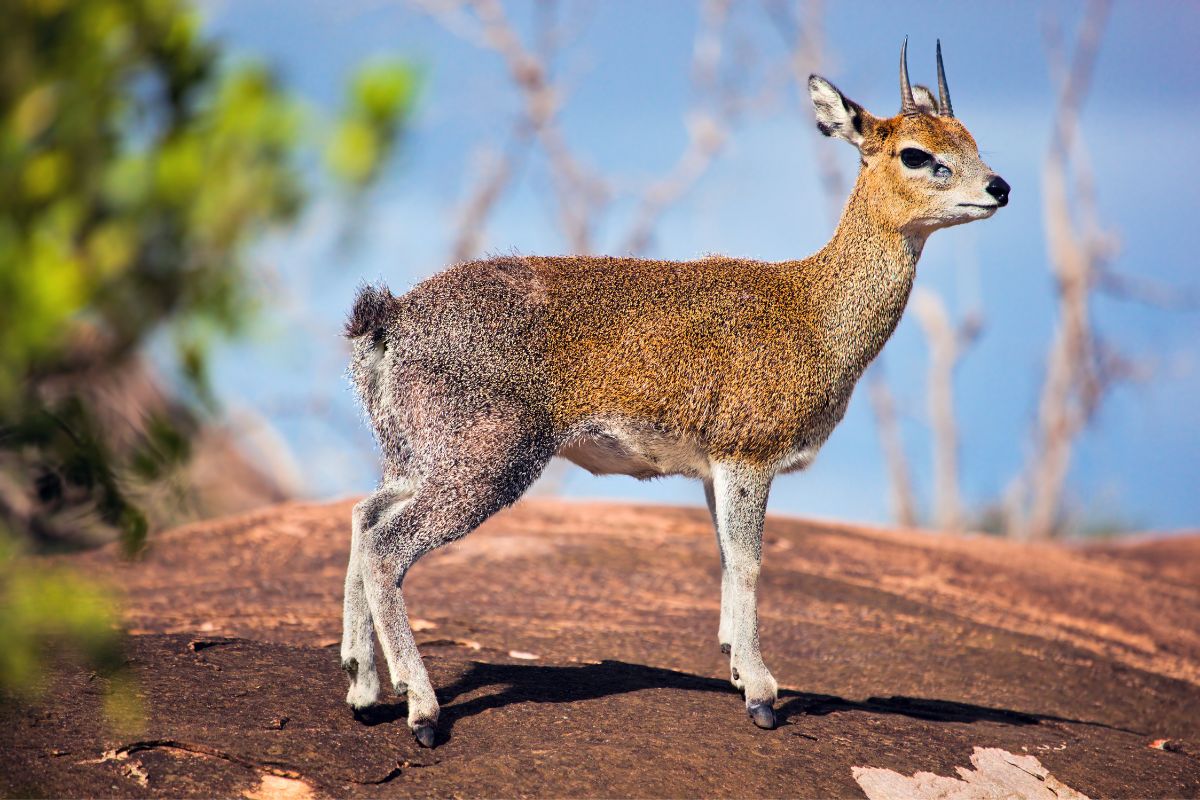
These small antelope are adorable and their behavior as well as their cute appearance will endear them to most people.
Despite their fragile appearance these are hardy animals who live in mountainous areas of the Serengeti and often in extremes of temperature.
Klipspringers eat a wide variety of grass and plants from which they derive most of their water requirements.
Like other dwarf antelope such as the dik-dik they form monogamous pairs, and defend their territory together.
Males are particularly vigilant and stand guard for extended periods to protect the pair’s territory and young. This leaves the female to tend to the single calf.
Bushbuck
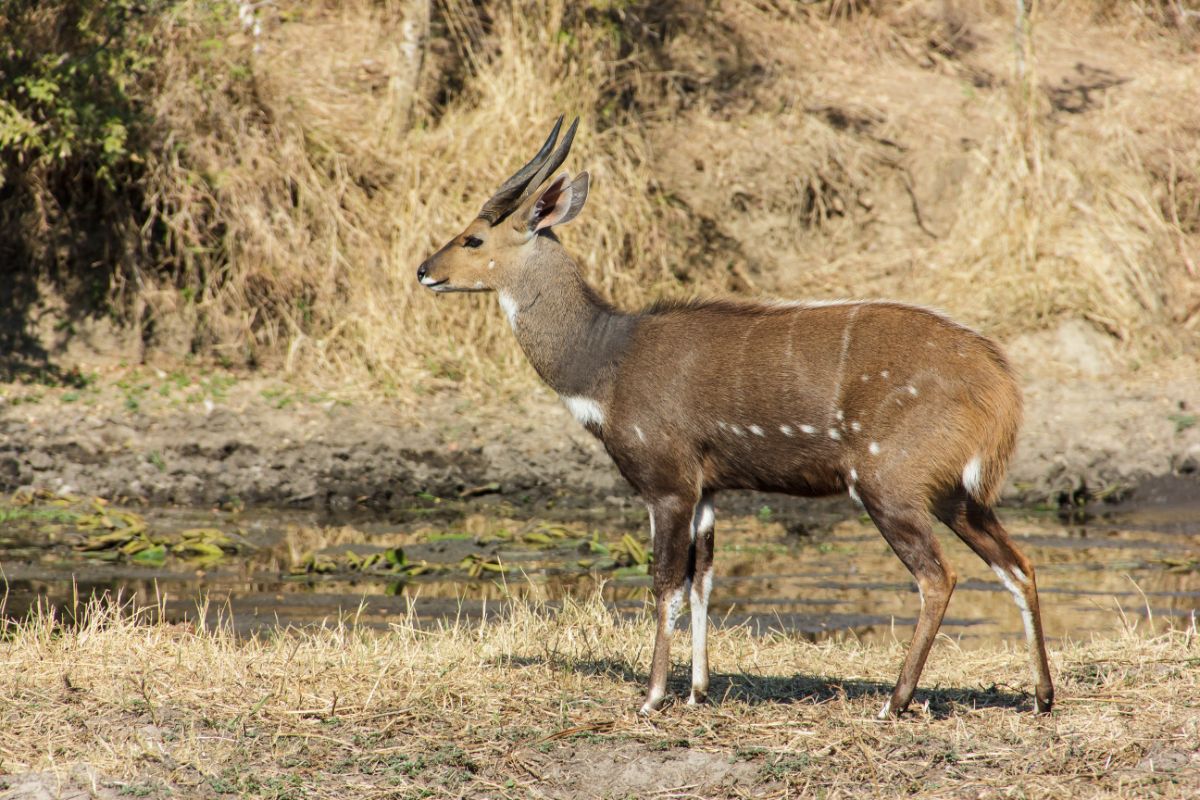
The bushbuck is an elusive and shy Serengeti antelope which spends most of its time in thick vegetation.
Males have large spiral horns which can be between 10-20 inches long. They are not territorial and are very solitary.
Females don’t have horns and also have very different pelage or fur. While the male’s coat is dark gray the female’s is reddish brown with more white spots all over the body.
The biggest threat to the bushbuck is the loss of its habitat as humans encroach on where it lives with roads, agriculture and settlements.
Impala
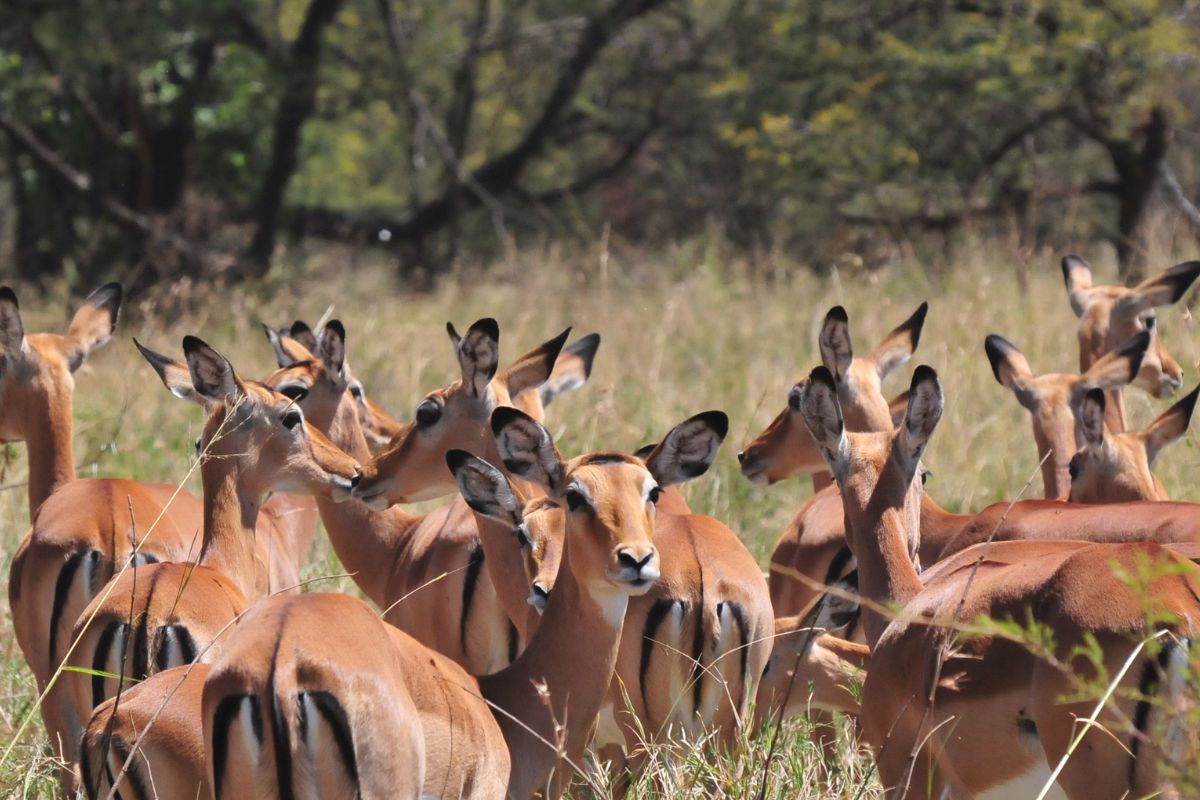
Impala are another well known antelope from the Serengeti and one of the most abundant.
They are mid-sized and very graceful with an easily recognizable face, having a white spot above their eyes. They also have a black stripe down the middle of their tail.
Males have lyre-shaped horns with a distinctive ringed appearance, females have no horns. Impala are extremely fast runners and agile jumpers both of which they use to evade predators.
Average height to the shoulder is between 28-36 inches and weight is 88-165 pounds. They move around in breeding herds with a territorial male shepherding the females.
Females give birth to a single calf which only remains in hiding for a couple of days before joining the creche of other young impala.
Oribi
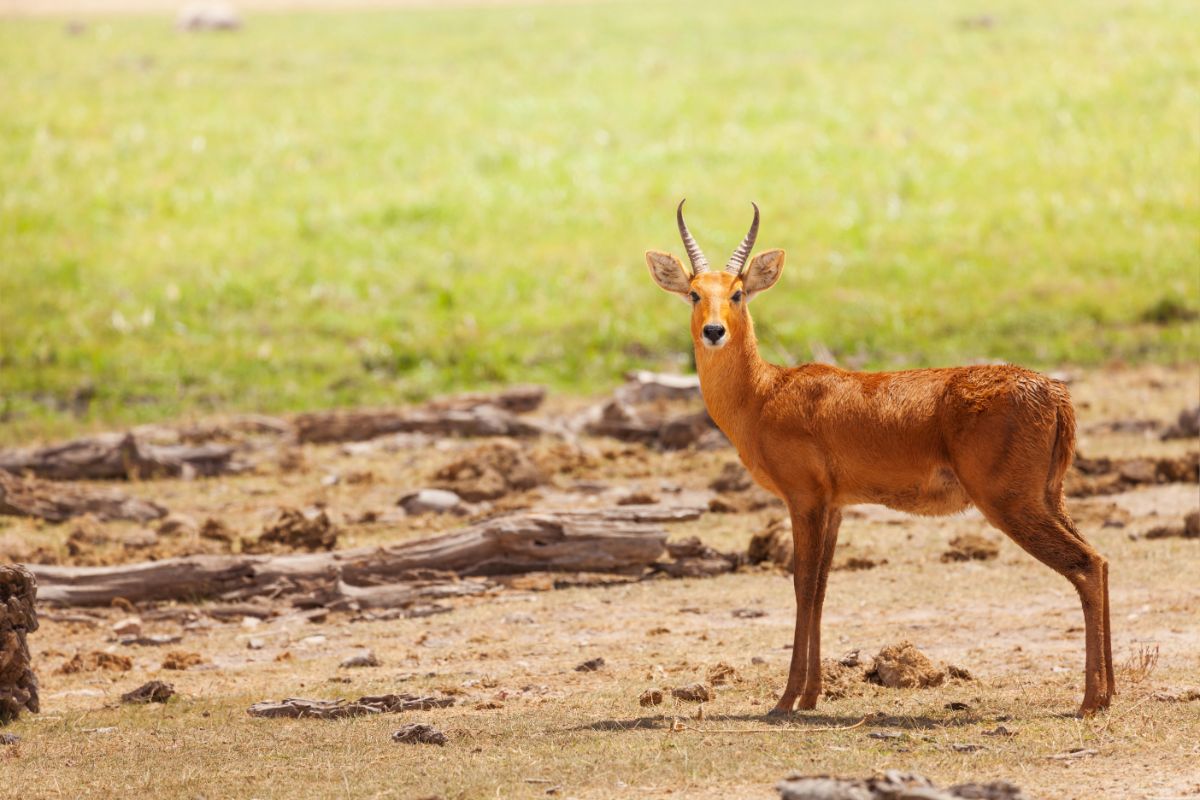
In the northern parts of the Serengeti you will find the oribi, a small slender antelope with reddish brown fur or pelage and a white underside.
It can be easily identified by the dark spot or sweat gland under its ears.
Male oribis have small, sharp horns that are completely straight, the females do not have horns. They are actually a type of dwarf antelope with a long neck and long legs so look almost gazelle-like.
These antelope live in pairs or small herds but have the lowest distribution across the Serengeti so if you happen to see some consider yourself lucky.
Females are slightly larger than the males and are between 20-30 inches tall. Average weight is about 31 pounds.
Steenbok
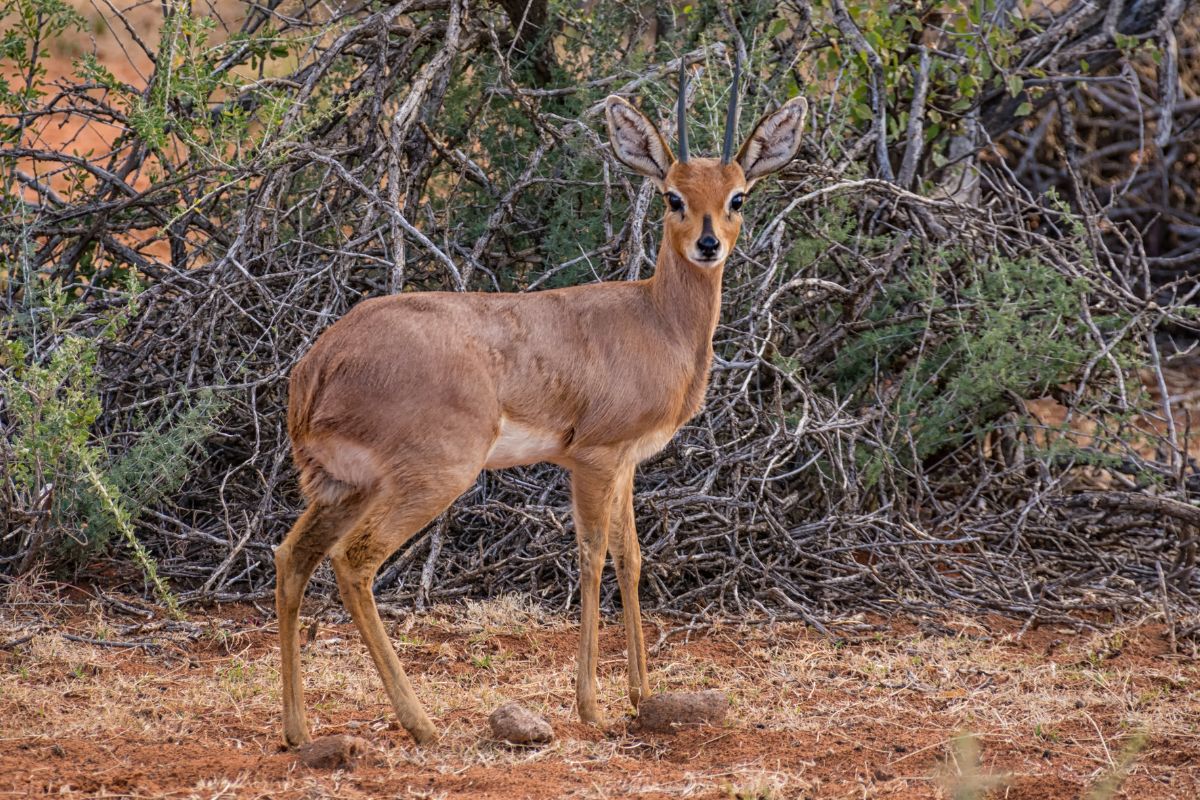
Steenboks are another small antelope which can be seen around the woodlands of the southwestern Serengeti and in some parts of the north.
They are an extremely pretty antelope with large eyes and ears.
Their coat is a fawn color with an orange tinge, and they have a distinctive teardrop shaped black patch above their nose.
Steenboks feed on young plants, foliage and leaves and can wander far from water sources.
When threatened by a predator, steenboks will run in a zig-zag pattern to try and confuse or throw off their pursuer. They are normally found in the shade during the hottest part of the day.
Male steenbok have a pair of menacingly sharp horns. The females have none but are larger than the males.
Dik-Dik
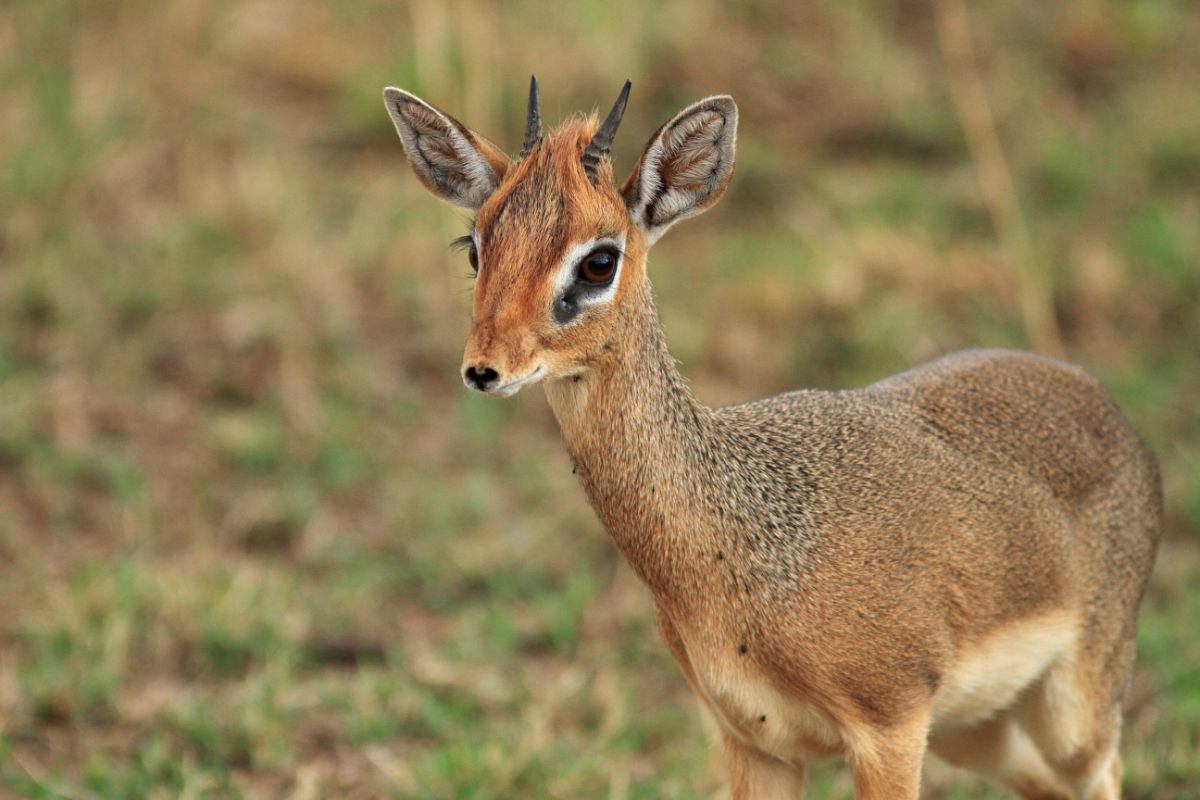
These dainty little antelope are very cute and are widespread across the Serengeti. They are normally found in thick vegetation where they may be hard to see due to their size.
In fact, they are the smallest antelope in the Serengeti at only 12-16 inches high.
Dik-dik are fairly sedentary but if needed can run up to 26 miles per hour.
When a predator approaches the female’s alarm call is a ‘dik-dik’ sound from which they got their name. Pairs mate for life.
Males have small horns which are often concealed by the small tuft of hair on their head. They have large eyes which are surrounded by a ring of white fur, making them stand out.
Below each eye is a scent marking gland.
Topi
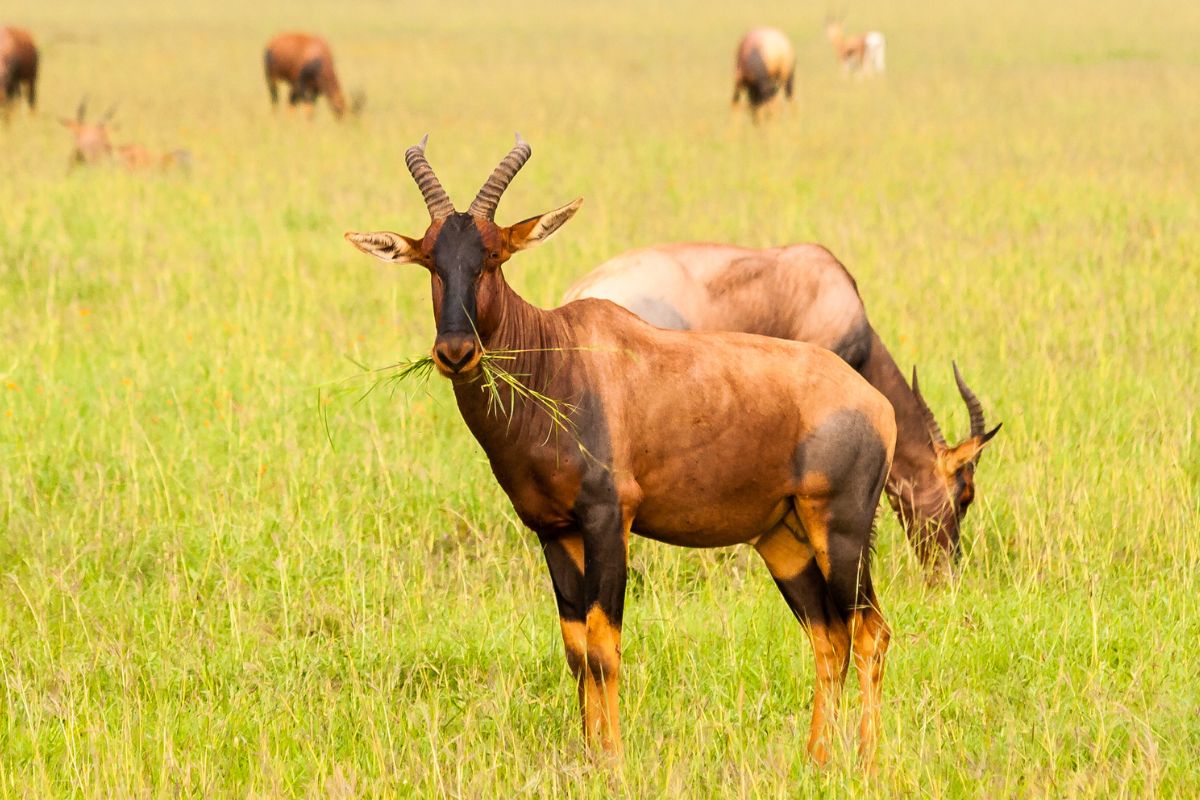
Topi bear a striking resemblance to the hartebeest, this is because they belong to the same sub-family.
They both have short necks, long legs and long faces, but the topi is darker on the top of the legs. Medium in size the topi has a reddish brown coat.
These are a very social antelope and can be seen in great numbers on the plains of the eastern Serengeti.
The males shepherd groups of females, but their social organization is quite flexible.
Similarly flexible are their breeding habits. Normally calving only happens once a year but if food is plentiful they will calve more than once. If a female senses danger she can delay the labor process.
Gerenuk

The gerenuk is a tall, elegant antelope which closely resembles a gazelle. It has a long, slender neck and limbs. All of these features explain why it is also called the giraffe gazelle.
A flat wedge shaped head and large, round eyes add to the beauty of this graceful Serengeti antelope.
Male gerenuk stand at approximately 35-41 inches tall and the females are slightly shorter at an average of 31-39 inches.
A male weighs anything between 68-115 pounds while the smaller females average between 62-99 pounds.
In terms of coloration the gerenuk has a reddish brown back and lighter, fawn to buff colored flanks. The insides of the legs and the underside of the belly are a cream color and the eyes and mouth are surrounded by white fur.
Female gerenuk have a distinctive dark patch on the crown and the males have lyre shaped horns. Mainly active during the day the gerenuk may be spotted shading from the noon sun or feeding on foliage.
Final Thoughts about the Serengeti Antelope
We hope you have enjoyed this guide to the antelopes of the Serengeti as part of a safari guide to Tanzania.
